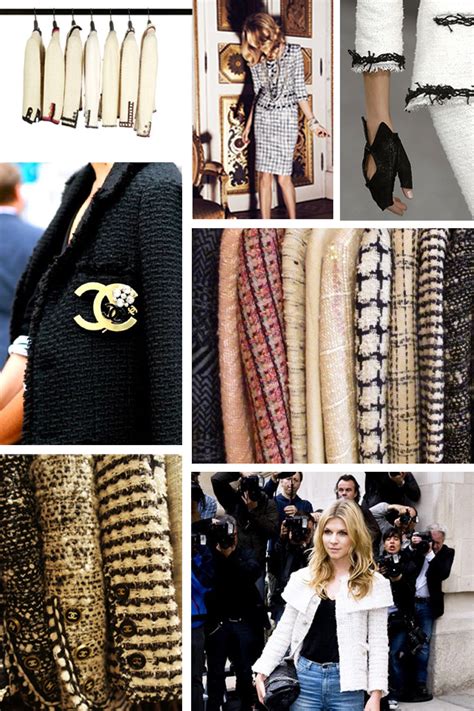tweed chanel 1920 | chanel's tweed tweed chanel 1920 While retrospectively modest when they were introduced in 1925, Gabrielle Chanel’s first tweed suits, set the groundwork for what we have now come to instantly recognize as a CHANEL jacket. Hotel Louis Vuitton Paris - Best Price Guarantee. TAG Heuer returns to eyewear with Thélios. Watches & Jewelry. 10 January 2024. Zenith unveils first ICONS: PILOT capsule collection. Fashion & Leather Goods. 09 January 2024. Louis Vuitton launches Louis Vuitton [Extended], its first podcast, for a deep dive to the heart of the Maison.
0 · chanel's tweed history
1 · chanel's tweed fabric
2 · chanel's tweed
3 · Chanel tweed style
4 · Chanel tweed jacket
5 · Chanel tweed dress
6 · Chanel tweed boucle
7 · Chanel sweep the tweed
Louis Vuitton Monogram Canvas Belt Bag. $3,199.99 Only 1 Left! Final Sale. Just In quickview. Size: One Size. $4,499.99. add to bag. Louis Vuitton Monogram Shearling Belt Bag. $4,499.99 Only 1 Left! Final Sale. Shop a wide selection of Louis Vuitton Belt Bags & Fanny Packs For Women at Saks OFF 5TH.
Beginning in 1924, Chanel enlisted a Scottish factory to produce her iconic tweed fabrics for everything from sportswear to suits and coats.
Conceived of by Gabrielle “Coco” Chanel in the 1920s, the designer was influenced by the men’s tweed fishing and hunting jackets worn by her lover the Duke of . Beginning in 1924, Chanel enlisted a Scottish factory to produce her iconic tweed fabrics for everything from sportswear to suits and coats.
Conceived of by Gabrielle “Coco” Chanel in the 1920s, the designer was influenced by the men’s tweed fishing and hunting jackets worn by her lover the Duke of Westminster on his sporting estate, Reay Forest, in Sutherland, in the north-west Highlands. While retrospectively modest when they were introduced in 1925, Gabrielle Chanel’s first tweed suits, set the groundwork for what we have now come to instantly recognize as a CHANEL jacket.
It was in the mid-1920s, while Coco Chanel was in Scotland, accompanied by the Duke of Westminster, that the designer of one of the greatest houses of all time discovered the emblematic material that was to become inseparable from her creations: tweed.She broke down sartorial codes by borrowing elements of men's fashion, such as pockets and tweed, and erased waistlines and bustlines to create androgynous silhouettes.The Chanel suit became a status symbol for a new generation, made of solid or tweed fabric, with its slim skirt and collarless jacket trimmed in braid, gold buttons, patch pockets, and—sewn into the hem—a gold-colored chain ensuring it hung properly from the shoulders. Keen to free women from the restrictive corsets and long skirts of previous decades, Chanel crafted a slim skirt and collarless jacket made of tweed, a fabric then considered markedly unglamorous.
Tweed suits first featured in her collections in the 1920s when she transformed their status from traditional sports and outdoor wear to fashionable daywear – but it was following her 1954 return to fashion that the CHANEL suit became so synonymous with the CHANEL look.
The vintage Chanel jacket (in tweed, of course), one of the most classic (and long-lasting!) pieces in fashion history, was first designed by Coco Chanel. However, tweed was originated long before then (the 18th century to be exact) in Scotland. The use of tweed was a touch of masculine sophistication with romantic resonance for Chanel, who first encountered the fabric in the 1920s during trips to the estate of her lover, the Duke of Westminster. Beginning in 1924, Chanel enlisted a Scottish factory to produce her iconic tweed fabrics for everything from sportswear to suits and coats.
Conceived of by Gabrielle “Coco” Chanel in the 1920s, the designer was influenced by the men’s tweed fishing and hunting jackets worn by her lover the Duke of Westminster on his sporting estate, Reay Forest, in Sutherland, in the north-west Highlands.
While retrospectively modest when they were introduced in 1925, Gabrielle Chanel’s first tweed suits, set the groundwork for what we have now come to instantly recognize as a CHANEL jacket. It was in the mid-1920s, while Coco Chanel was in Scotland, accompanied by the Duke of Westminster, that the designer of one of the greatest houses of all time discovered the emblematic material that was to become inseparable from her creations: tweed.She broke down sartorial codes by borrowing elements of men's fashion, such as pockets and tweed, and erased waistlines and bustlines to create androgynous silhouettes.The Chanel suit became a status symbol for a new generation, made of solid or tweed fabric, with its slim skirt and collarless jacket trimmed in braid, gold buttons, patch pockets, and—sewn into the hem—a gold-colored chain ensuring it hung properly from the shoulders.
Keen to free women from the restrictive corsets and long skirts of previous decades, Chanel crafted a slim skirt and collarless jacket made of tweed, a fabric then considered markedly unglamorous.Tweed suits first featured in her collections in the 1920s when she transformed their status from traditional sports and outdoor wear to fashionable daywear – but it was following her 1954 return to fashion that the CHANEL suit became so synonymous with the CHANEL look. The vintage Chanel jacket (in tweed, of course), one of the most classic (and long-lasting!) pieces in fashion history, was first designed by Coco Chanel. However, tweed was originated long before then (the 18th century to be exact) in Scotland.
prada saffiano tote dupe

chanel's tweed history

As a result of its position in Group 16 of the periodic table, . was element 116’s temporary name until an official name was chosen by IUPAC. In 2012, IUPAC approved that element 116 should be named livermorium with the symbol Lv. The deputy director of Russia’s Joint Institute for Nuclear Research (JINR) initially wanted element 116’s .
tweed chanel 1920|chanel's tweed


























